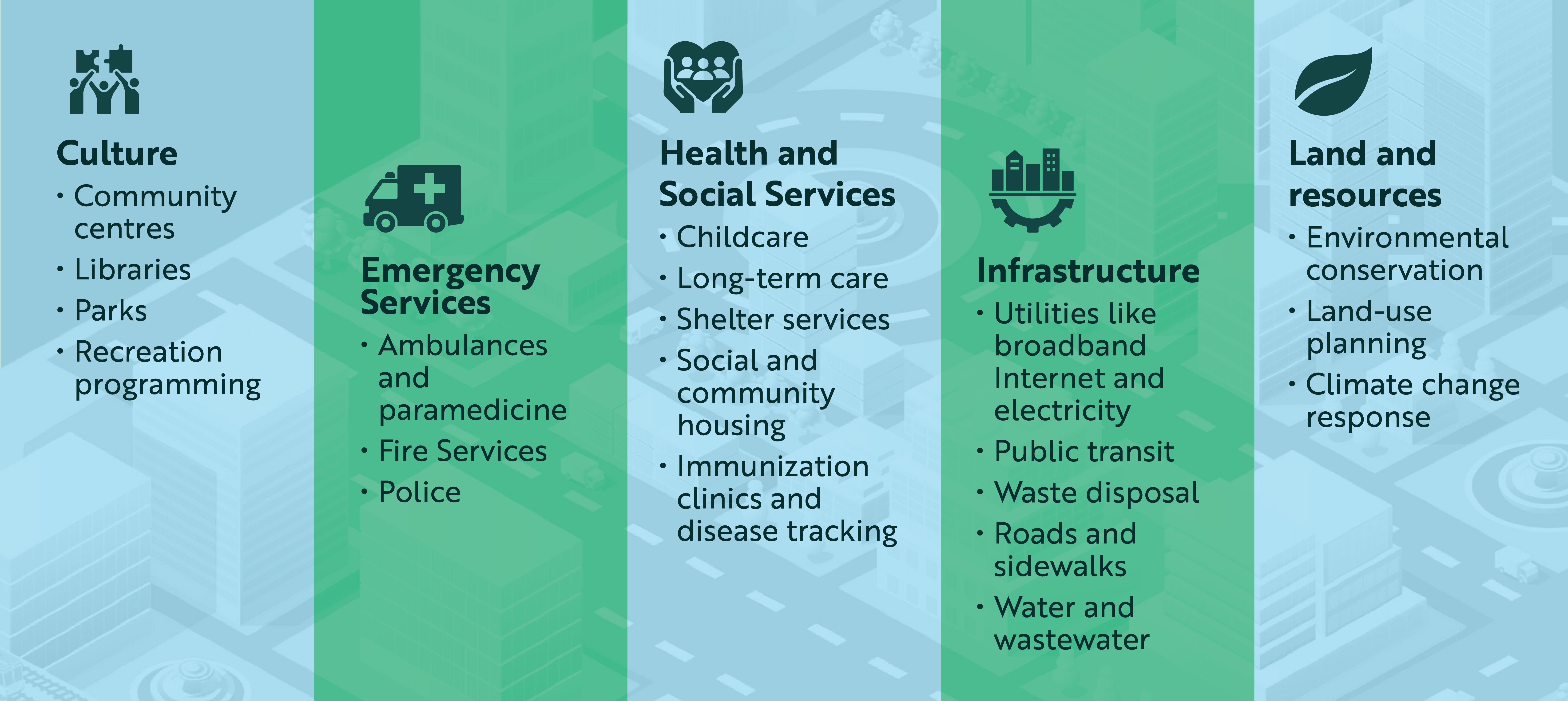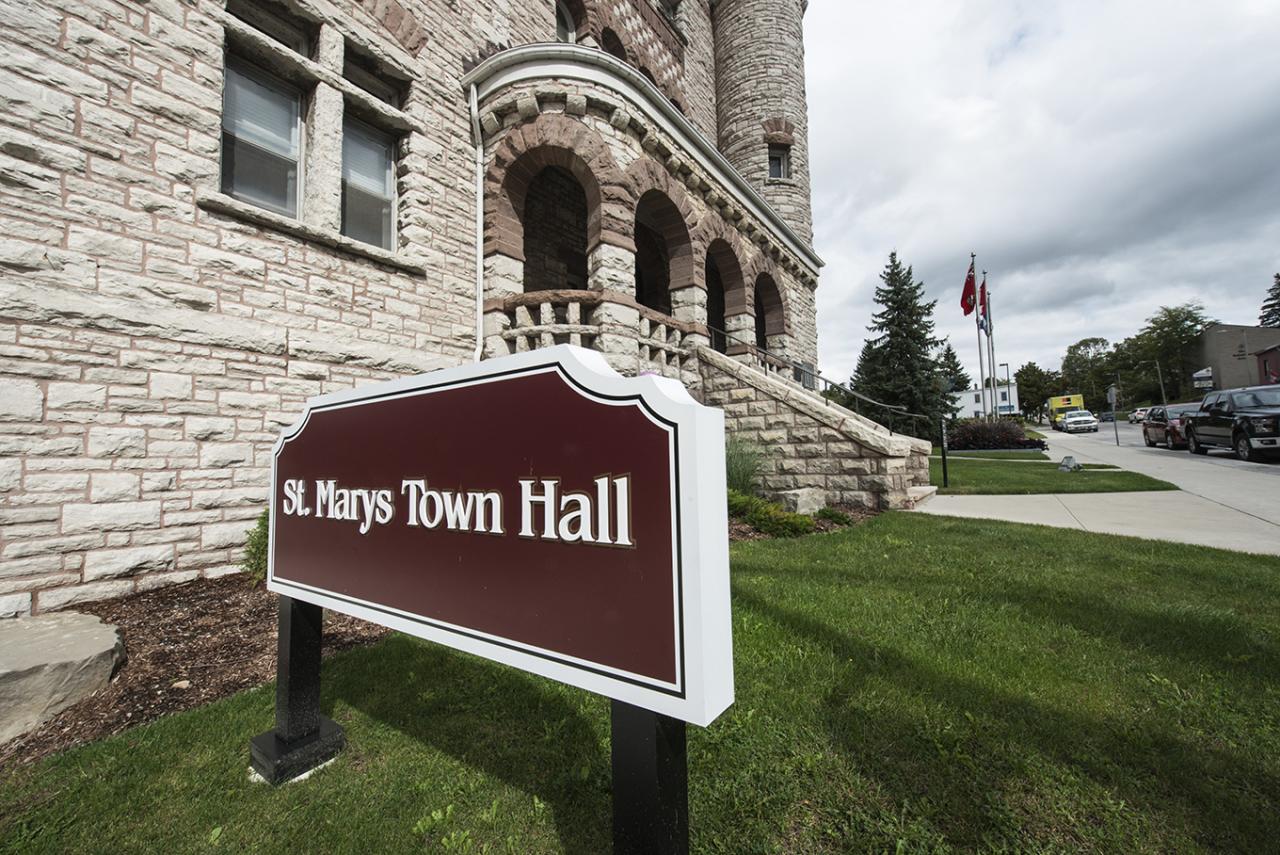Municipal 101
| Municipal 101 | Municipal Structures | Municipal Elections | Key Municipal Roles | Ontario Municipalities |
AMO has developed Municipal 101 as a source of key information for students, elected officials, sector professionals, and more, to learn how to improve engagement between local governments and their communities. The municipal level of government is the easiest to access for residents, so it's the best way to influence social change.
to improve engagement between local governments and their communities. The municipal level of government is the easiest to access for residents, so it's the best way to influence social change.
Why are municipalities important?
Ontario has 444 municipalities, and they touch the lives of every Ontario resident, every day.
Ontarians interact with municipal government by:
- taking a shower or flushing a toilet (water and wastewater)
- moving from place to place (roads, sidewalks, and public transit)
- throwing out garbage and recycling (waste disposal)
- playing pick-up and organized sports (parks and recreation)
- and much more
Municipal governments are crucial to Ontario’s economy, investing revenues of nearly $65 billion in important public services and infrastructure each year.
Ontario’s municipalities own, operate, and maintain nearly a trillion dollars of infrastructure that is essential to Ontario’s economic prosperity and quality of life – more than both the provincial and federal governments.
It is important to understand how municipal governments operate to know:
- how to build fun and engaged communities
- how to make smart political decisions
- how local services are delivered
What is a municipality?
Municipalities are one of three orders of government that represent residents of Ontario:
- The Government of Canada (also called the federal government)
- The Government of Ontario (also called the provincial government)
- Municipalities (also called municipal governments or local governments)
A municipality is a geographic area within a province such as a town, city, village, county, or region.
Each municipality is governed by a group of elected officials called a “council.” Councils must have a minimum of five (5) members, including the head of council. Most Ontario municipalities maintain very close to the minimum size with nearly 75% of municipalities having seven (7) or less councillors as of 2022.
Municipalities are responsible for providing services to their residents and businesses. The powers, duties, organization, and structure of Ontario municipalities are determined by provincial legislation called the Municipal Act.
Out of Canada’s three orders of government, municipal governments are closest to the people and provide the services most likely to impact the daily life of Ontarians.
What do municipal governments do?
In Ontario, all three orders of government are responsible for serving residents. There are many areas where multiple orders of government have responsibility or impact, so municipal governments must work closely with the federal and provincial government to ensure services are funded properly and meet local needs. Housing and climate change are notable policy areas where multiple orders of government have responsibility.
The Government of Canada is responsible for issues that affect the whole country like immigration and citizenship, criminal law, foreign policy, money and banking, regulation of commerce, the post office, and more.
The Government of Ontario (like other provinces) is responsible for issues where they have been given exclusive power in Canada’s constitution. These include education (including post-secondary), hospitals, prisons, civil rights, provincial highways, natural resources, and more.
The provincial government is responsible for determining which services municipalities provide and the methods to fund them. Municipalities in Ontario are unique compared to other provinces because the government of Ontario has made many social services such as social housing, shelter services, and childcare a municipal responsibility.
Ontario municipalities are responsible for the following service areas:

Learn more about AMO's advocacy in these areas by clicking on the category headings in the menu bar.
How do municipal governments pay for the services they provide?
The largest source of revenue for municipalities is property tax. It is a stable source of revenue that municipalities use to fund the variety of services listed above. Municipalities collect taxes from each property owner based on the property’s value. The video below explains how they are calculated.
Unlike at other orders of government, municipal revenue does not usually grow with inflation.
As of 2022, Ontario’s property taxes per person were the second highest in Canada at $2,200. Almost a third of yearly municipal spending in Ontario covers services that are provincial responsibilities in other parts of Canada. While the Ontario government partially offsets this gap, as of 2022 municipal expenditures in these areas outpaced provincial grants by nearly $4 billion.
| Municipal 101 | Municipal Structures | Municipal Elections | Key Municipal Roles | Ontario Municipalities |
